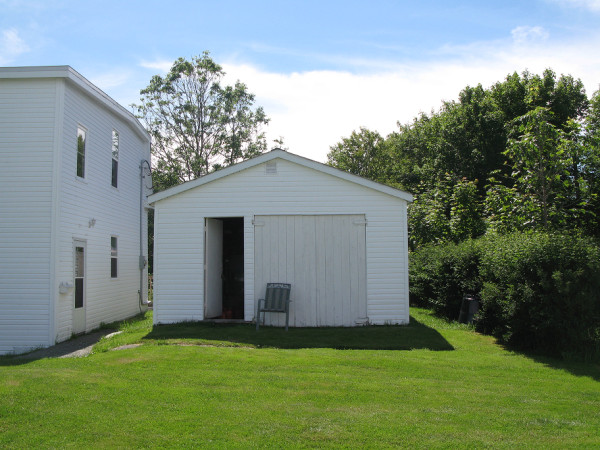 In the late 1800's this root cellar played an important role in farm life at Riverside Farm, once located on Portugal Cove Road in St. John's. Root Cellars Rock was contacted by Stan Lawlor, now living in northern Ontario, who's great-great grandfather built the cellar. He recalls, "as a child, this root cellar was an essential part of my activities, as I helped my family sow, cultivate and harvest potatoes, turnips, carrots, parsnips, lettuce, cabbage, beets, savoury, etc. for family consumption throughout the winter...As a young person in the 1950 and 1960s, I spent many hours storing and carrying vegetables in that cellar."
In the late 1800's this root cellar played an important role in farm life at Riverside Farm, once located on Portugal Cove Road in St. John's. Root Cellars Rock was contacted by Stan Lawlor, now living in northern Ontario, who's great-great grandfather built the cellar. He recalls, "as a child, this root cellar was an essential part of my activities, as I helped my family sow, cultivate and harvest potatoes, turnips, carrots, parsnips, lettuce, cabbage, beets, savoury, etc. for family consumption throughout the winter...As a young person in the 1950 and 1960s, I spent many hours storing and carrying vegetables in that cellar."
Stan talked about the amount of work that went into building the cellar: "the root cellar is an 8 - 10 feet deep excavation that was dug by hand and it is lined with large boulders which were placed manually. It is a bit of an architectural masterpiece, even if I do say so myself...I was always astounded at the size of the rocks that my great grandfather placed in the days before modern machine technology. Absolutely no mortar was used in the construction of the cellar. Also, the rock walls have never required repair over the 60 years that I remember the cellar."

It's now over a hundred years since the root cellar was constructed, and Stan's family still lives on the property, although it's no longer a farm. His brother continues to store vegetables in the cellar purchased in bulk from local farmers, as well as his own homemade wine.

In today's world, centred around disposable items, root cellars seem like a marvel of dependability. Built generations ago for a practical purpose, and if cared for, still able to serve that purpose today. There are not many things being created these days that can boast that promise of longevity.
That's why FSN chose root cellars as the symbol of our local food project and named the project Root Cellars Rock. We're working to develop a strong foundation for local food in this province that's also built to last. Certainly this blog is about more than root cellars, but they're at the heart of our food traditions. We're hoping that root cellars and Root Cellars Rock inspire people towards sustainable living, self-sufficiency, and commitment to a thriving local food system.
To find out how to build, stock and maintain a root cellar, visit our Root Cellars Food Skills Workshop. If you have a root cellar, old or new, and would like to share your story about it like Stan did, please contact info@rootcellarsrock.ca.
Pictures and some of the information for this post came from the Root Cellars Traditions collection in the MUN Digital Archives, created by Intangible Cultural Heritage and the Agricultural History Society. Visit that collection to learn a lot more about this province's cellars.













